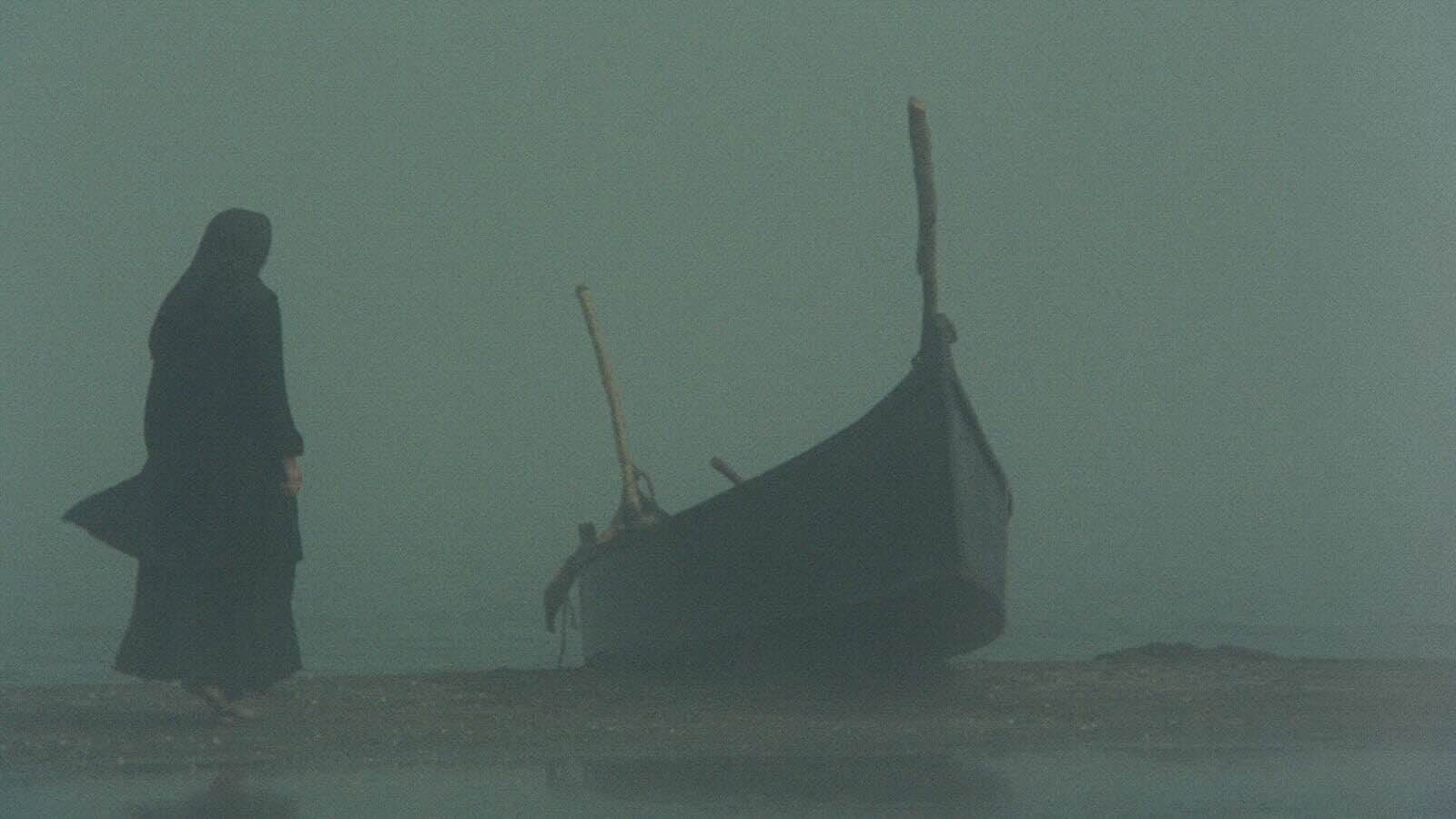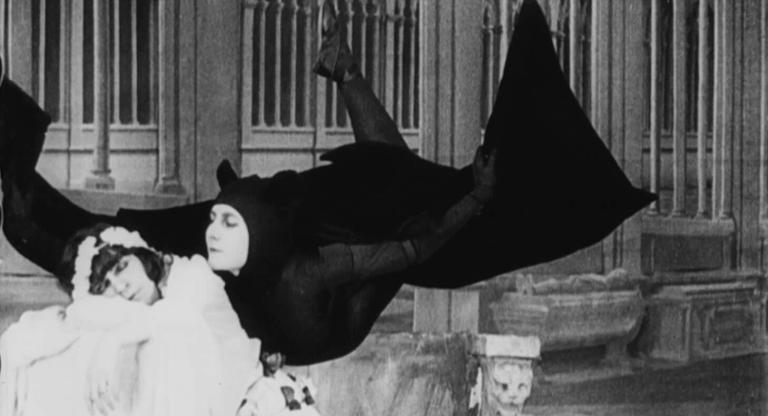Bahram Beyzaie’s The Stranger and the Fog (1974) teeters on the edge of dream and nightmare. The film follows Rana (Parvaneh Massoumi), a woman who has lost her husband to the sea, and Ayat (Khosrow Shojazadeh), a mysterious stranger with no memory of his past, who moves into Rana’s village and hopes to marry her despite their neighbors’ reservations. The village, located on an island off the coast of Iran, is both perpetually shrouded by fog and constantly obscured by camerawork that tightly sticks to its characters. The island remains a mystery throughout the film, never shown in wide shots. Even the residents seem to have their own unidentifiable culture: they don stiff, angular woolen coats for their village meetings; smack stones together in a percussive chorus when they mourn; and assemble into ritualistic parades of self-flagellation along the beach. Notably, Beyzaie designed the island’s customs, music, and attire to be a mishmash of cultures across Iran.
This world of unexplainable mythos—a stark divergence from the familiar urban setting of Beyzaie’s debut feature, Downpour (1972)—positions the viewer as a stranger confronted with a new environment, much like Ayat. For Beyzaie, however, The Stranger and the Fog and Downpour were closely connected. According to the Iranian film critic Amir Hossein Sadat, Beyzaie found inspiration for the former while shooting the latter in Tehran, experiencing how even the most modern cities were governed by invisible traditions and tribal dynamics.
Beyzaie captures these experiences of otherness and exclusion through beautiful, striking cinematography. During Ayat’s village trials, Beyzaie and his cinematographers, Mehrdad Fakhimi and Firooz Malekzadeh, compose each frame with a careful balance between the foreground and background, alienating Ayat from the surrounding community. The film invites the viewer to absorb these carefully constructed images, drawing them deeper into its meditative, poetic stoicism. These slow, quiet moments are punctuated with gripping action sequences that are invigorated by Beyzaie’s quick editing and energetic tracking shots. Shortly after Ayat begins settling down on the island, the local children trick him into thinking that mysterious figures have come to the beach in search of him; having always been paranoid about his forgotten past, Ayat tears through the village in a panic, yelling, and swinging his scythe. The camera captures the running Ayat in a tight medium shot, with the background flying by in a blur of browns and grays, creating a hectic and claustrophobic image that heightens the scene’s sense of panic. The suffocating atmosphere and singular world-building of The Stranger and the Fog create a visceral audience experience of alienation and unfamiliarity, presenting a powerful meditation on contemporary Iranian society in the guise of a mystical tale.
The Stranger and the Fog screens this Saturday, September 21, and on November 23, at BAMPFA.




